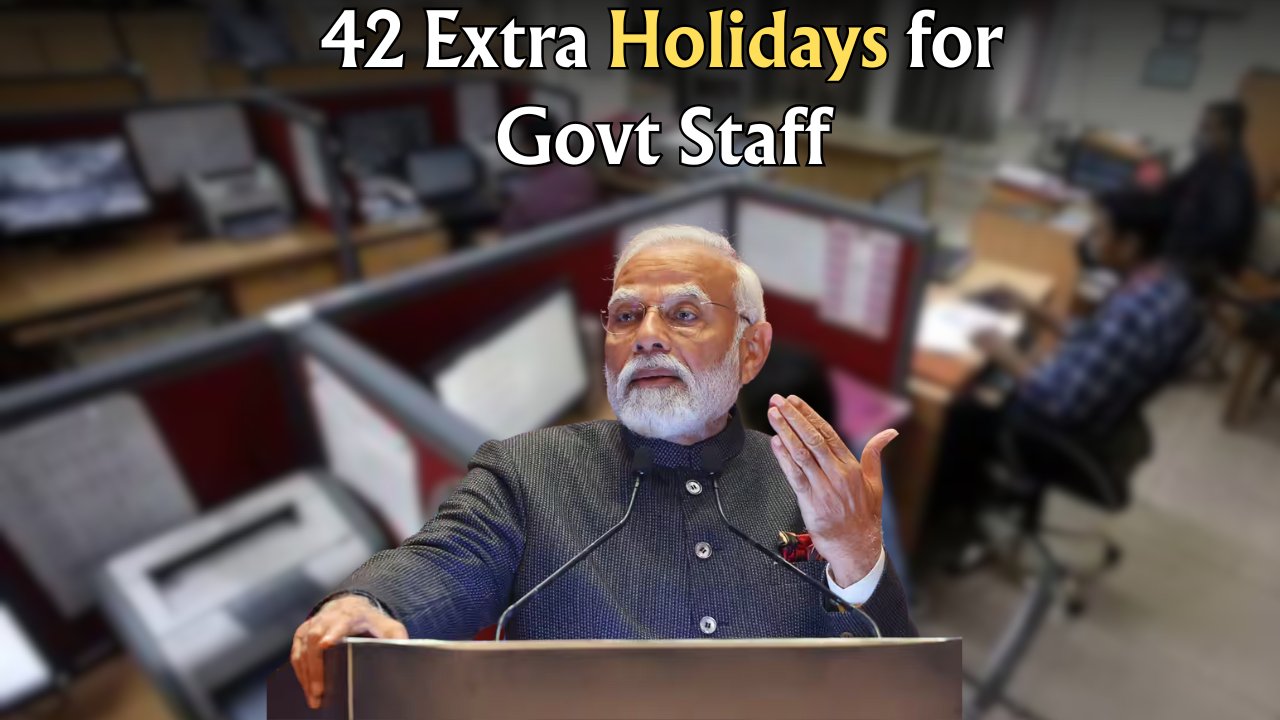In a major announcement, the central government has approved 42 additional leave days every year for its employees. This new leave policy will come into effect from July 1, 2025, and aims to improve the work-life balance, mental health, and family time for lakhs of central government employees across India.
What Are the New 42 Leave Days?
These 42 extra leave days are separate from the existing earned leave (EL), casual leave (CL), and medical leave (ML). The new leaves are divided into special categories like mental health, family care, wellness, and emergencies.
New Leave Types and Benefits
Here is a simple breakdown of the new leave types and how they help:
- Mental Wellness Leave (10 Days) – For therapy or rest to support mental health.
- Family Care Leave (8 Days) – To take care of sick parents, children, or spouse.
- Bereavement Leave (5 Days) – Leave after the loss of an immediate family member.
- Health Check Leave (6 Days) – For regular medical check-ups.
- Wellness Retreat Leave (5 Days) – For yoga or wellness programs (only Group A & B).
- Child Academic Leave (4 Days) – For attending school events and exams (for parents).
- Volunteer Leave (2 Days) – For working with NGOs or community service.
- Emergency Leave (2 Days) – For urgent personal matters.
Who Can Use These Leaves?
The new leave policy applies to Group A, B, and C central government employees:
- Group A & B: Get all 42 leaves.
- Group C: Get 38 leaves (excludes retreat and volunteer leaves).
- Contractual staff: Get 24 leaves.
- Probationers: Get 20 leaves.
- Retiring employees: Get leave based on months left in service.
How to Apply for These Leaves?
Employees can apply through the e-Office or SPARROW portal. Steps include:
- Log in using your employee credentials.
- Go to the “Wellness & Special Leaves” section.
- Select leave type and upload required documents.
- Submit and wait for digital approval.
Documents like a doctor’s note or school letter may be needed, depending on the leave type.
Why This Change Was Needed
The policy was introduced after increasing cases of employee stress, burnout, and poor mental health, especially after the COVID-19 pandemic. Employee welfare bodies and the 7th Pay Commission also recommended such a change.
Conclusion
This new leave policy is a positive step for all central government employees. It shows that the government is now focusing on the health and well-being of its workers. Employees should stay updated with their HR departments for the latest guidelines and start planning how to make the best use of these new leaves.
